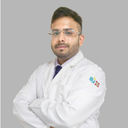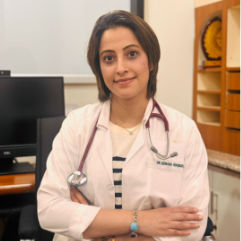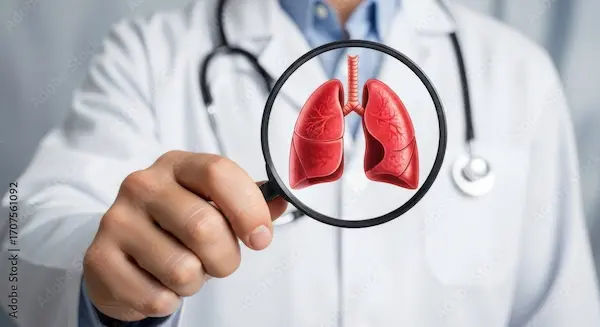Pneumonia Causes and Treatment
Discover the causes, symptoms, and treatment options for pneumonia. Learn how this lung infection develops, its risk factors, and the best ways to manage and prevent it.

Written by Dr.Sonia Bhatt
Last updated on 3rd Jul, 2025
Introduction
Pneumonia is a common yet serious lung infection that affects millions of people worldwide. While it shares symptoms with other respiratory illnesses, pneumonia is a distinct condition that requires proper diagnosis and treatment. Many people confuse pneumonia with a severe cold or flu, but it has unique causes, symptoms, and complications. In this article, we will explore everything you need to know about pneumonia.
What is Pneumonia?
Pneumonia is an infection that inflames the air sacs in one or both lungs. The air sacs may fill with fluid or pus, leading to symptoms such as cough with phlegm, fever, chills, and difficulty breathing. Pneumonia can be caused by bacteria, viruses, or fungi and varies in severity from mild to life-threatening. It is particularly dangerous for infants, older adults, and individuals with weakened immune systems.
Types of Pneumonia
Pneumonia can be classified based on the source of the infection:
Community-Acquired Pneumonia (CAP) – The most common type, occurring outside of healthcare settings.
Hospital-Acquired Pneumonia (HAP) – Acquired during hospital stays and often caused by antibiotic-resistant bacteria.
Healthcare-Acquired Pneumonia (HCAP) – Occurs in long-term care residents and outpatient clinics.
Aspiration Pneumonia – Occurs when food, liquid, or vomit is inhaled into the lungs.
Causes of Pneumonia
Pneumonia can be caused by a variety of infectious agents, including:
Bacteria: The most common bacterial cause is Streptococcus pneumoniae. Other bacterial causes include Mycoplasma pneumoniae and Legionella pneumophila.
Viruses: Common viral causes include influenza, respiratory syncytial virus (RSV), and COVID-19.
Fungi: Fungal pneumonia is more common in individuals with chronic illnesses or weakened immune systems. The fungi responsible vary by geographic location and exposure to environmental sources such as bird droppings.
Risk Factors
Certain factors increase the likelihood of developing pneumonia, including:
Age: Infants (under 2 years old) and elderly individuals (over 65 years old) are more susceptible.
Chronic diseases: Conditions such as asthma, chronic obstructive pulmonary disease (COPD), and heart disease elevate risk.
Smoking: Damages the lungs' natural defences against infections.
Hospitalisation: Especially for those on ventilators.
Weakened immune system: Due to HIV/AIDS, chemotherapy, or organ transplants.
Symptoms of Pneumonia
Pneumonia symptoms vary in severity and may include:
Chest pain when breathing or coughing
Persistent cough producing phlegm
Fever, sweating, and chills
Shortness of breath
Fatigue and weakness
Confusion (particularly in older adults)
Nausea, vomiting, or diarrhoea
Newborns and infants may present with difficulty breathing, fever, restlessness, or feeding problems.
Diagnosis of Pneumonia
Diagnosing pneumonia involves a combination of medical history assessment, physical examination, and diagnostic tests. Early and accurate diagnosis is essential to determine the severity of the infection and guide appropriate treatment.
1. Physical Examination
A doctor will begin the diagnosis by reviewing the patient's medical history and conducting a thorough physical examination. They may ask about symptoms such as cough, fever, shortness of breath, and chest pain.
During the examination, the doctor will use a stethoscope to listen to the lungs for abnormal sounds, such as:
Crackling or bubbling sounds – These may indicate fluid or mucus in the lungs.
Wheezing – This can suggest narrowed airways.
Reduced breath sounds – This may signal lung infection or inflammation.
2. Imaging Tests
Imaging tests help assess the severity and location of pneumonia within the lungs. The most common imaging tests include:
Chest X-ray – This is the primary imaging test used to diagnose pneumonia. It helps determine the extent of lung infection and identifies lung inflammation. However, a chest X-ray cannot specify whether the pneumonia is caused by bacteria, viruses, or fungi.
CT Scan – If pneumonia symptoms persist despite treatment or if complications are suspected, a CT scan provides a more detailed view of the lungs, helping doctors assess lung damage and detect other underlying conditions.
3. Laboratory Tests
Laboratory tests are essential to confirm the presence of infection and identify the specific organism responsible. These tests include:
Blood Tests – A blood test helps detect infection in the bloodstream and may sometimes identify the organism causing pneumonia. However, pinpointing the exact pathogen is not always possible.
Pulse Oximetry – This test measures oxygen levels in the blood using a small device attached to the finger. Pneumonia can reduce oxygen levels, indicating the severity of the condition.
Sputum Test – A sample of mucus (sputum) from a deep cough is collected and analysed to help determine the type of microorganism responsible for the infection. This is particularly useful in guiding antibiotic or antiviral treatment.
Pleural Fluid Culture – If there is fluid accumulation around the lungs (pleural effusion), a needle is inserted between the ribs to extract a sample. The fluid is then tested to identify the infection and guide appropriate treatment.
Treatment Options
The treatment of pneumonia focuses on eliminating the infection and preventing complications. Many cases of community-acquired pneumonia can be treated at home with medication, while more severe cases may require hospitalisation. Although most symptoms improve within a few days or weeks, fatigue can persist for a month or longer.
The choice of treatment depends on the type and severity of pneumonia, as well as the patient’s age and overall health. The main treatment options include:
1. Antibiotic Treatment
Antibiotics are the primary treatment for bacterial pneumonia. The choice of antibiotic depends on the type of bacteria causing the infection, which may take time to identify. If symptoms do not improve, a different antibiotic may be prescribed. Completing the full course of antibiotics is essential to prevent recurrence or antibiotic resistance.
2. Antiviral and Antifungal Treatment
The antiviral and antifungal medication are uses for pneumonia cause by virus and fungus respectively.
Antiviral medications may be prescribed for pneumonia caused by viruses such as influenza or COVID-19. While mild viral pneumonia often resolves on its own, antiviral drugs can help reduce the severity and duration of the illness in high-risk individuals.
Antifungal medications are used to treat fungal pneumonia, which is more common in people with weakened immune systems. The treatment duration may be longer than for bacterial pneumonia, depending on the severity of the infection.
3. Supportive Care and Hospitalisation
Supportive treatments help manage symptoms and aid recovery. These may include:
Cough medicine – Used to ease coughing and promote rest. However, since coughing helps clear mucus from the lungs, it is advisable not to suppress it completely. A low-dose cough suppressant may be used if necessary.
Fever reducers and pain relievers – Medications such as paracetamol, ibuprofen, or aspirin can help relieve fever, discomfort, and body aches.
Hospitalisation – Severe cases, particularly in older adults, infants, or those with underlying health conditions, may require hospital treatment. In hospital, patients may receive intravenous antibiotics, oxygen therapy, or ventilatory support if breathing difficulties occur.
Prevention Strategies
Preventing pneumonia is essential, especially for those at higher risk, such as young children, older adults, and individuals with weakened immune systems. The following measures can help reduce the likelihood of developing pneumonia:
Get Vaccinated – Ensure you and your children receive recommended pneumonia and flu vaccines.
Maintain Good Hygiene – Wash hands frequently, use sanitisers, and cover your mouth when coughing or sneezing.
Avoid Smoking – Smoking damages lung defences, making infections more likely.
Strengthen Immunity – Eat a balanced diet, exercise regularly, get enough sleep, and manage underlying health conditions.
Prognosis and Recovery
The prognosis for pneumonia depends on factors such as age, overall health, and the severity of the infection. While mild cases typically resolve within a few weeks, severe pneumonia may require hospitalisation and a longer recovery period. Older adults, young children, and individuals with weakened immune systems may take longer to heal and are at a higher risk of complications.
Recovery involves rest, staying hydrated, and following prescribed treatments. Some people may experience lingering fatigue or a persistent cough for weeks after the infection clears. A healthy lifestyle and regular medical check-ups can aid in a full recovery and prevent future infections.
Conclusion
Pneumonia is a serious lung infection that can range from mild to life-threatening, particularly for vulnerable individuals. Early diagnosis and appropriate treatment are crucial for managing the condition effectively. Preventive measures, such as vaccination, good hygiene, and a strong immune system, play a key role in reducing the risk of pneumonia. With timely care and proper management, most people recover fully and regain their normal health.
Consult Top Respiratory Disease Specialist
Consult Top Respiratory Disease Specialist

Dr. Aakanksha Chawla
Pulmonology Respiratory Medicine Specialist
9 Years • MD (Pulmonary Medicine), IDCCM, IFCCM (Indian Fellowship in Critical Care Medicine)
Delhi
Apollo Hospitals Indraprastha, Delhi
(250+ Patients)

Dr. Asif Iqbal. Respiratory Medicine Specialists.
Pulmonology Respiratory Medicine Specialist
14 Years • DNB (Anesthesia), FCCP (USA), Respiratory Medicine Specialist, IDCCCM (Critical Care Medicine), MBBS
Kolkata
Apollo Multispeciality Hospitals , Kolkata, Kolkata
(25+ Patients)

Dr Shubham Agarwal
Pulmonology Respiratory Medicine Specialist
4 Years • MBBS (Gold Medal) MD, DM (Pulmonary, Critical Care and Sleep Medicine), DNB (Medicine) , MRCP (UK), EDARM,
Lucknow
Apollomedics Super Speciality Hospital, Lucknow

Dr. Sumara Maqbool
Pulmonology Respiratory Medicine Specialist
12 Years • MBBS, DNB Respiratory, critical care and sleep medicine, DrNB superspeciality Critical care, IDCCM, IFCCM, EDIC
Delhi
Apollo Hospitals Indraprastha, Delhi
(25+ Patients)

Dr. Meghena Mathew
Pulmonology Respiratory Medicine Specialist
11 Years • MBBS, DNB (Pul.), IDCCM, EDIC,IFCCM
Chennai
Apollo First Med Hospitals P H Road, Chennai
(50+ Patients)


